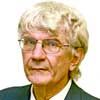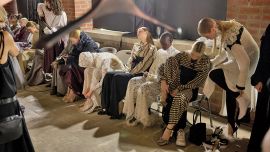Just the day before yesterday, the University of Buenos Aires (UBA) celebrated its bicentenary – even if Córdoba University already marked its second bicentenary eight years ago, an impressive landmark overlapping with (and strongly influencing) almost all this country’s post-colonial history. With a wife a UBA professor for almost three decades and with over a decade spent immersed in university studies myself, how could Thursday’s anniversary not be the subject of today’s column?
Needless to say, a subject far too vast and complex for a single page. Quite apart from the extreme diversity of departments and disciplines, the sheer size of its student population (over 308,000) staggers the mind. Nobody thinks of my own alma mater of Cambridge as anything but a university town (except perhaps as the birthplace of Pink Floyd) while that would be almost the last definition extended to this metropolis and yet with UBA alone (and there are other universities), the Federal Capital has a higher percentage of student population than Cambridge.
Not that bigger is always better, of course – the QS ranking of UBA was 74th last year as opposed to third for Cambridge. Yet even that ranking is impressive when measured against such enormous hurdles as massive student classes and unrestricted admission which so conspire against academic standards. While the latter has not been seriously challenged in over a century, high time that it came under question as wrecking standards without even achieving the intended objective of social equality – unrestricted admission merely opens the door to middle-class mediocrity since low-income talent cannot defer earning a living (far more scholarships should be on offer). This problem has only been enhanced by the growing divergence between private and public schooling in the past half-century – just as Eastern European Communism was described in its day by some on the receiving-end as “we pretend to work and they pretend to pay us,” so the schoolchildren of Argentine public education today are slipping into “we pretend to learn and they pretend to teach us,” trends magnified by the pandemic. Such secondary school output makes life more difficult not only for Toyota but also for UBA.
As UBA celebrates its bicentenary, hard to imagine where a third century will find it, let alone the fourth already marked by Córdoba. If anything other than open universities will exist at all with the home office made so widespread by the pandemic replacing lecture halls while Artificial Intelligence displaces the professors.
But UBA faces more immediate challenges. Perhaps the most obvious is its growing politicisation – the academic universe needs to cover the full spectrum of ideas and thinking, not just the circumstantial tyranny of the politically correct.
No real need to expand on this point, which has been pressed often enough by opposition critics, but there is another, subtler danger which is perhaps more frequently voiced in opposition circles. This is the utilitarian school of thought which, correctly perceiving this country’s crying need for more scientists and engineers in an increasingly technological world, insists on universities being retooled towards that end with more social impact and more direct inclusion into productive activity. Yet that is the task of technical colleges worth developing in their own right – the universities must remain spheres of culture whose concrete benefits are not always visible in real time but the results of meetings of minds with ideas bouncing off each other. Creativity and innovation can never be mechanistic – sciences and humanities are not as separate as they might seem. The ivory towers need to take their distance from society because there is such a thing as being too close to reality to see it.
Yet while universities deserve defending from being transformed into either centres of political indoctrination or technical factories for the commercial and industrial worlds, this does not mean that they should remain unchanged. When I first arrived in Argentina, one of my earliest cultural shocks reminding me that I was in a different country came when I discovered that the university curriculum did not break down into courses but “careers (carreras)” – rather than being educated, students were being trained to become lawyers, doctors, architects, engineers, etc. In short, the utilitarian school of thought but in an outdated professional format. Hard as it is to dismantle entire faculties, this structure does not seem viable in the 21st century.
A single page can no more do justice to two centuries of existence than to the complexity of the institution but at least a paragraph of potted history is due. Exactly two centuries ago last Thursday UBA was inaugurated in San Ignacio church next to what is today the Colegio Nacional, giving life to an edict dated August 9, 1821 issued by Buenos Aires Governor Martín Rodríguez – the university was thus pre-presidential (even if its real mastermind Bernardino Rivadavia was the first Argentine leader to call himself president five years later). Both its ecclesiastical birthplace and its first rector (Father Antonio Sáenz) point to the deeply Christian origins of Western universities in general but that has changed since – above all, since the major reform of 1918 when university autonomy, free and unrestricted admission and student co-government were all born (UBA had 5,400 students in that year). Another UBA milestone was the “Night of the Long Sticks” in mid-1966 when the protests of students and professors against the military trusteeships imposed on five faculties were brutally crushed by police batons, driving dozens of brilliant academics into enforced or voluntary exile in the worst of Argentina’s many brain drains – fortunately this was to prove more reversible than the 1918 reform. The six faculties of 1821 have since doubled to 13.
Younger readers of this column might just be alive when the millennium of academe is celebrated (marking the foundation of the University of Bologna in Italy in 1088) but for now let us treasure the bicentenary of UBA, contrasting its beginnings in a church just off Plaza de Mayo with last Thursday’s semi-virtual ceremony (strangely omitted from any direct coverage by the conventional visual media).



















Comments